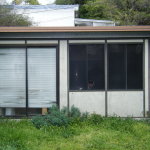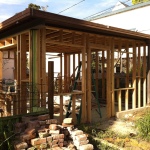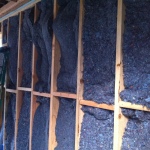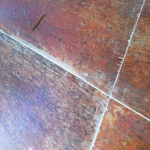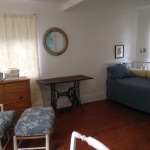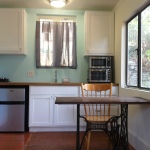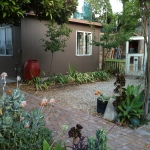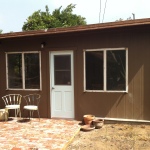Love grows best in little houses, so the song says. After seven years in a little house, I think it true. With three children and a one-time partner and his child in and out of my tiny two-bedroom house, my home has seen myriad living arrangements. With only me and one of my kids still at home, our 650 sq ft house feels downright grand. With a recent desire to hibernate, I’ve found myself retreating to rebuild in small ways to make my nest more comfortable for we current inhabitants.
The studio out back was finished a couple years ago, to house tenants or my mom or any children that come back to the nest. As with the house, I designed and chose materials for the studio to be as resource-efficient as possible. Since it is difficult sometimes to remember or find green resources, here are a few lessons learned. I still make mistakes, like remembering polyurethane is a plastic after sealing my guest room floor. We are, after all, still in a market that isn’t looking out for us. But we can all have healthier homes, for ourselves and the planet, with intention and a little research.
Use what you have: the studio was a kit building with a concrete floor, a solid metal roof and posts, but cardboard walls and plastic windows. I kept the footprint and roof, and framed in new walls so I could insulate for warmth and coolth.
Reclaim materials: for the best use of materials (and money), reclaim solid and natural materials from elsewhere. The metal windows, wood door, kitchen sink, and bathroom fixtures came from a Habitat ReStore. The wood floor came from a dance studio that was giving it away from free on craigslist. The brick for the patio was the foundation under my friend Meg’s old house.
Use non-toxic materials: this is a hard one. But fiberglass insulation is easy to substitute with recycled cotton denim insulation with the same R values. It is not only non-toxic and easier to hang, it also does a better job of blocking sound. For paints and finishes, look for no VOC options, and look up Safecoat for plastic-free alternatives to polyurethane … the one I forgot about in the house, argh.
Study renewable, natural, and/or low embodied energy materials: for the siding, I chose Hardie board because it is cheap and hailed as a green material. With sand, concrete, wood fibers, and water, it has little to no toxins; and since it is distributed regionally, the transportation impacts are less than products unavailable regionally.
